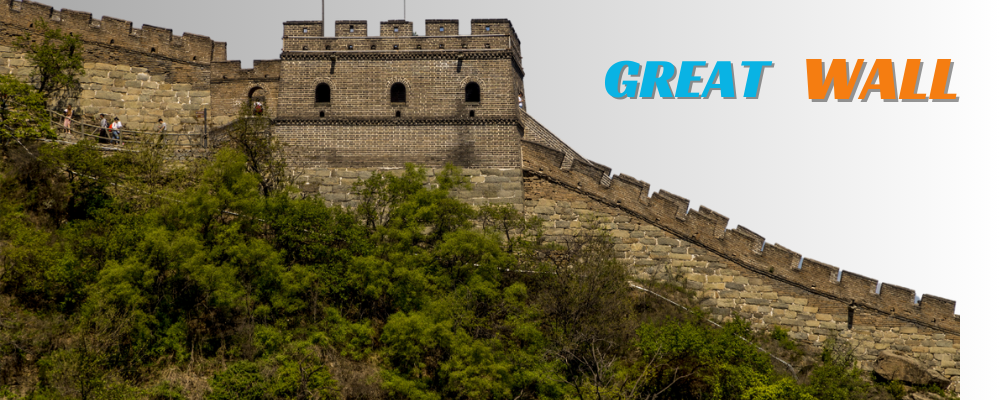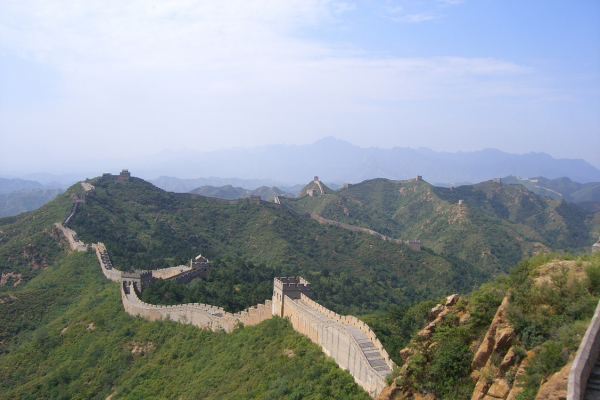Introduction to the Great Wall of China: A Wonder of the World
One of the most famous structure built by human we have Great Wall of China. The majestic 13,000 mile long wall is more than just a wall it is a testament of will power, might and the era-old Chinese culture. One of the Medieval Wonders of the World, Great Wall of China has stood for many dynasties rise fall-off and the history of Chinese Empire as well human innovations on land.

History Behind the Great Wall of China: How It Was Built
Construction of the Great Wall in China was not done all at once, but rather it spanned several centuries. By the 7th century BC, the earliest walls were constructed by different feudal states to protect against northern tribes. But during the most well known sections of the wall though, were build Ming Dynasty (1368-900). This wall was build with earth, wood bricks and stone. All sections were made to feel appropriate within their own context spatially and temporally as well. They continued on for millions of soldiers and peasants, employed in violation of labour under terrible conditions to construct this enormous structure.
Great Wall's Role in China's Defense Strategy
The Great Wall of China was at once a physical, psychological barrier. Built to shield the Chinese empire from Mongols and other northern invaders, the wall also served an important military function in the empire’s defense. Watchtowers and signal fires were used for fast communication and the wall was even set up with pitfalls to tire invaders. As formidable a structure that the Great Wall was in defending the empire, it was also a symbol of what the Chinese were willing to defend.

Exploring the Different Sections of the Great Wall
The Great Wall of China is not a single wall but rather multiple walls built over time in various regions. Many parts (near, say, Beijing) are still in good shape and many people visit these sight. Some sections of the wall are well preserved in other parts, this ruins are lost or not present. The well known parts being the restored sections (Mutianyu and Badaling) or the more rough & less crowded locations (Jinshanling & Simatai) for a better authentic visit. Reading through these varied sections of the Great Wall tells stories of its many historical circumstances and its problems.
Architectural Marvels of the Great Wall of China
For the Great Wall of China, these are astronomically vast architectural achievements. A magnificent marriage of technology, military tactics and art, the wall is incredible. It contains a few interesting ones; watchtowers, beacon towers and fortresses that added to the wall’s capacity for defence It also is of great variety on the design of the wall caused by the different materials and techniques used in construction i.e.bricks walls can be build in mountainous places while earthen walls at plains. The Great Wall is more than just a wall, its a network of ancient tech masterpiece engineered by ancient China.

Myths and Legends Surrounding the Great Wall of China
Myths and legends in relation to the Great Wall of China is one of the things that really help with its mystique. A particular famous story is that the souls of men who died while making the wall still roam it, allegorizing its immense wonder and tragedy. Another myth is that you can see the Great Wall from space, which is not accurate. However, these myths emphasize the cultural importance of the wall and its history as intertwined with Chinese culture with the world.
Cultural Significance of the Great Wall in Chinese Heritage
The Great Wall of China is deeply integrated into the Chinese cultural and historical landscape. It symbolizes the vigor and strength of Chinese people. In the course of its millennia-old history, it has been a totem of national determination and supremacy for the Chinese civilization and resolve. The wall is also an indication of China to keep its borders, It resemble the battle China fought (and still fighting) with China’s over arching identity. It has meaning above and beyond as a military stratagem that this monument has become a cultural idol, worshiped in culture, literature art.
Visiting the Great Wall: A Traveler's Guide
Great Wall of China— you are going to see that once in a lifetime during travel. The top attractions such as Badaling are located near Beijing and will take you cable cars up, along nicely paved paths with gorgeous views. But if you’re looking for something a little more authentic, Mutianyu and Jinshanling are less touristy and will let you hike the wall as nature intended. One ought to wear robust shoes, take some water and ready for the change of weather. Whether you are fascinated by history or just in love with the wall itself, visiting the Great Wall is something that leaves memories to live on top of.

Conservation Efforts: Protecting the Great Wall for Future Generations
One of the greatest wonders of the world, the Great Wall of China endures threats from both natural and human degradation. Sadly the only way to save it from collapse is through conservation. International and domestic projects are being carried out to prevent the wall from crumbling any further. This includes restoration of damaged spots, fight against vandalism, as well as battle erosion by force of nature and tourism. But the delicate balance of conservation and public access is easier said than done, for instance over tourism could destroy the structure forever.
Great Wall of China in Modern Pop Culture
In recent times, The Great Wall of China appears numerous times in modern pop culture both in movies and videogames alike. Called out in the Hollywood films The Great Wall (2016) and even an animated film like Kung Fu Panda 3 (2016). An image of sheer strength and imperishable legacy, it has long been a common denominator in the depiction of ancient civilizations. The Great Wall persists in its capacity to fascinate and fuel creativity, further embedding itself into the global cultural zeitgeist.

Amazing Facts You Didn't Know About the Great Wall of China
The Great Wall of China has lots of incredible facts about it, truth or not! The wall itself was intermittent, not an actual one and built by multiple different dynasties. As impressive as The Great Wall is, it still is not the longest wall in world (that title apparently belongs to the Dingo Fence in Australia) but is pretty famous for its location. There are remnants of the wall that are over two millennia old and the wall was built with local materials. A further proof of its various roles in China was that during the Tang Dynasty the Great Wall was in fact a trade route, so for a second trade post.
Great Wall of China: A Symbol of Perseverance and Strength
The Great Wall of China is the archetype of the resilience and endurance the people in China can manage. It was built still, by many lives lost back in the ancient centuries. Time and natural forces have not been able weaken the wall in any aspect; much as it takes from those who built it the indomitable spirit. The Great Wall today is still a mark of China’s power to look adversity in the face as the testament of the vision of its builders.
Great Wall of China: From Ancient Times to Today
From the initial groupings of small fortifications, to the Great Wall of today that is one of the New Seven Wonders of the World, the wall of china has remained. Once built as a military barrier, what once was function is now symbolic: Chinese culture upholds history patriotism homogeneity in matters of national identity. Wall: Some sections destroyed – rebuilt — under protected status but still existing today. The Great Wall today is said to be a connection of the historical old China and contemporary china.

Great Wall and Its Impact on Tourism in China
Tourism on the Great Wall of China is huge Industry annually swallows millions of visitors from all around the globe. The wall is not only a portal to the rich Chinese history but also gave face to one of mankind that many can experience in real life. Tourism has been economically significant giving jobs and stimulating local economies but as with anything else the surge in tourists has brought along challenges to preserve and maintain over all sustainability.
How the Great Wall of China Contributes to China's National Identity
The Great Wall of China is more than just a wall, it’s a nationalistic representation of the land that they call home (and they fight for). That it stands as testament to the resolve and creativity of ordinary Chinese and their ability to endure. The Great Wall is a sentiment in China that has bridged all the way from ancient times to now, creating a sense of identity and pride among its people. Until this day, the wall signifies China — and may continue to do so in our collective consciousness as a sort of national muscle memory.
Great Wall: A Testimony to Ancient Engineering and Innovation
The Great Wall of China is a wonderful reflection for the unique construction & innovation from ancient Chinese. The wall was constructed with the best methods around at that time including using local materials and revolutionary elements of watchtowers, beacon towers. Strategically sitting the wall along mountains and other natural barriers only serves to demonstrate how brilliant the construction of wall was. More than just a series of defensive military structures, The Great Wall remains an ancient engineering marvel that engineers and historians have never tired to admire.
Uncovering the Secrets of the Great Wall’s Construction Techniques
Construction methods for the Great Wall of China has been a topic of inspiration to many. The wall of not built in one era of a single group of people, but by many different dynasties each using possibly different systems. Some parts were rammed earth, some parts brick and stone. The distinctive construction was to reflect the evolving materials and their development then. One of the greatest enigmas is how our ancient progenitors moved and positioned such massive stones without the aid of our so-called modern machinery.
Customer FAQs
Can you visit all sections of the Great Wall?
Some parts of the wall are viewable by tourists, others in ruins or even inaccessible in remote areas for public access.
How long does it take to walk the Great Wall?
The Great Wall itself goes for over 13,000 miles however most visited sections by tourist are anywhere between hundreds yards to few miles at most. A day or so on the wall, depending on what patch of it you are walking.
What is the best time to visit the Great Wall?
The best time to come is spring from April to June and Fall (September- November) when the weather is not too hot or cold the view is great.
To know how a pyramids of Egypt click on the link given above.
To know how a mobile phone evolution click on the link given above.

Pingback: World war 1- Major Players, Trench Warfare ,Social Effects.
Pingback: How does a car engine work? Behind theory of physics